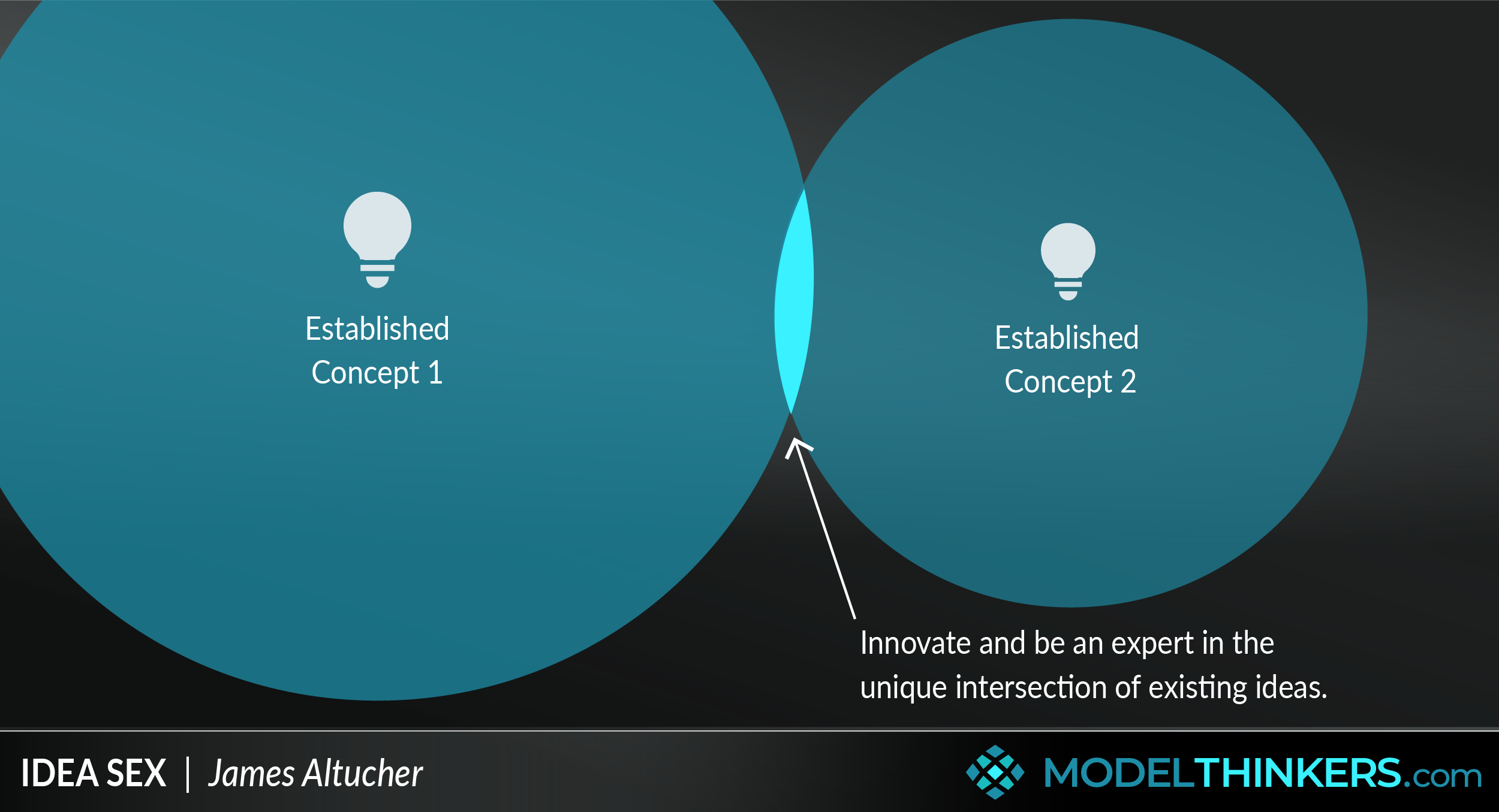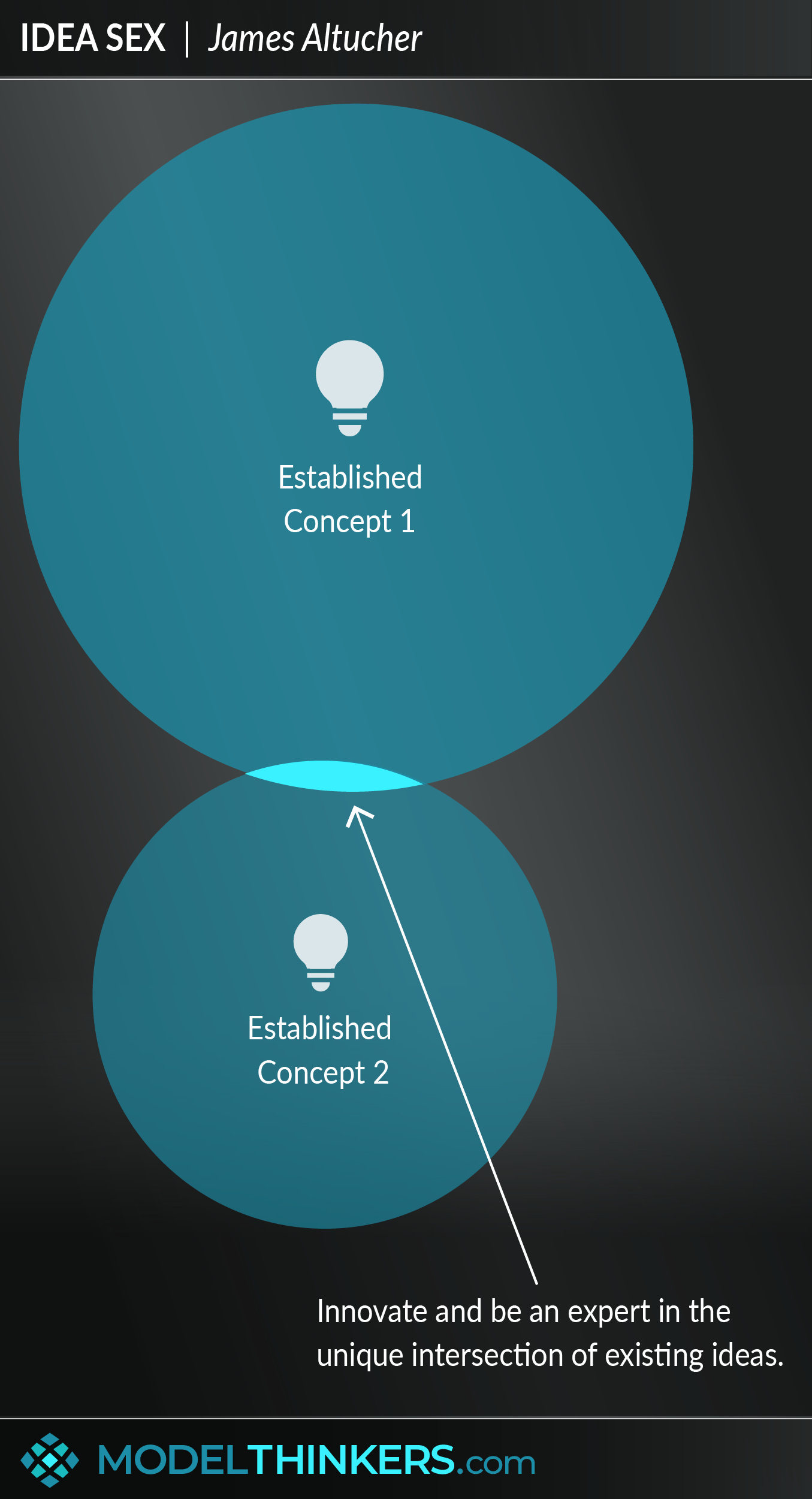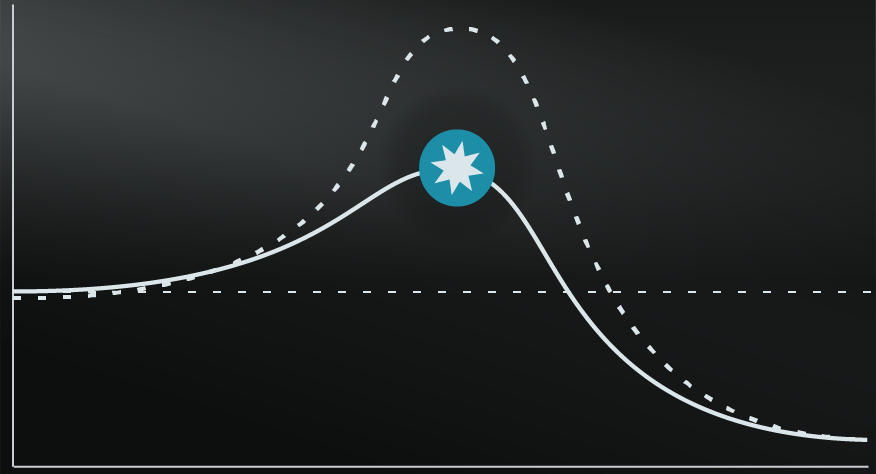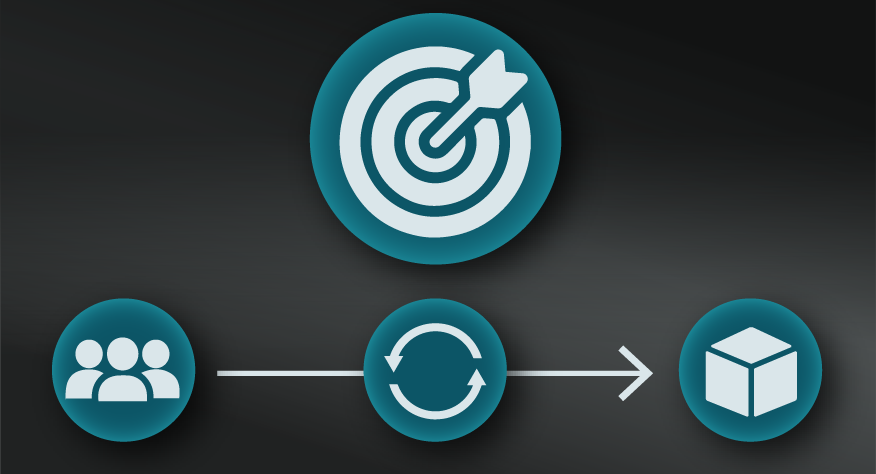

 0 saved
0 saved
 25K views
25K views








Are there really no new ideas in the world? Has everything been done, said and created — and are now just being recycled? This model takes that question and turns it on its head by leveraging the world’s vast body of knowledge to become more innovative.
Idea Sex is the process of finding unusual combinations between established ideas or mental models to create something new and unique as a result.
COLLECTIVE INNOVATION – COMBINING SPECIALIST KNOWLEDGE.
Baring a strong resemblance to the Medici Effect, science author Matt Ridley originally framed this model as a collective imperative for humans to innovate. He pointed to the way sex shares genetic material to create new life, and that new life draws on mutations from both lineages to evolve and adapt.
Ridley compares this to the global and collective process of combining diverse disciplines to drive innovation. He points out that this has been made possible through centuries of trade and exchange which enabled the emergence of specialists.
INDIVIDUAL FUTURE-PROOFING & INNOVATION.
More recently, writer and entrepreneur James Altucher has added his spin on the term, advocating for Idea Sex as a means to future-proof yourself and become an expert in a new field. Rather than a collective framing, he focuses on the opportunity this model provides for individuals.
Altucher explains: "My definition of creativity is the logical combination of two or more existing elements that result in a new concept. The best way to make a living with your imagination is to develop innovative applications, not imagine completely new concepts.
"That’s it. Make two lists of what people love. Combine them. Have fun. Do it every day. Pick the best idea. Make billions. Help millions. Make people happy."
Altucher notes that this approach develops you an expert in a new field: “Even if you’re not the best in the world in this or that, when you combine them, you’re the best in the world in the intersection.”
Altucher cites examples of film and music where breakthrough hits are developed by combining previously separate genres. One might even argue that the Fast and Slow Thinking model and the broader field of Behavioral Economics was a form of Idea Sex, combining cognitive psychology to challenge and innovate the field of economics, See the In Practice section below for more examples.
COMBINE APPROACHES.
We suggest viewing Idea Sex from both of the above perspectives — see it as a crucial call to action for more effective collaboration and knowledge sharing to collectively drive global innovation, and as a way to help ‘find your unique niche’ and future-proof yourself as an individual.
IN YOUR LATTICEWORK.
This model can be viewed as a close partner to the T-Shaped Person and even Munger's Latticework. To that end, it's a reminder for you to combine your deep domain knowledge with the 'big ideas from the big disciplines' that we've captured here on ModelThinkers to uncover new innovative approaches in your work and life.
You can use this model to reinvigorate your Curiosity Zone, by combining a new field with one that you've already achieved a level of expertise in. Finally, from a business or marketing perspective, this approach will potentially empower you to take a coveted Blue Ocean Strategy.




- ReCreate lists of popular ideas, then combine them.
Wanting to start a business? Create two lists of popular shops or businesses. Want to write a novel or a screenplay? Create two lists of stories or genres that you love. Then brainstorm ideas about their possible combination.
- Develop your cross-disciplinary knowledge and networks.
Rather than focusing on your areas of expertise and knowledge, challenge yourself by learning diverse areas from other fields and domains. Then consider what sort of combinations might come from them. Again, this relates to the T-shaped person model.
- Develop a Latticework of Models, not just a list.
It’s tempting to use ModelThinkers or equivalents to develop a ‘shopping list’ of mental models. However, the real power of the latticework of mental model approach comes from how you combine and integrate those models. If you’re a member of ModelThinkers go to your latticework to view your saved mental models. Take a moment to consider how they might combine and what that might give you - and capture your unique combinations in your notes for each model.
Idea Sex essentially draws from successful or striking elements already in existence and tries to combine them in unique ways to find innovation or new areas. While this is a legitimate technique for innovation it might suffer from assumptions or set world views from the established mental models it draws from.
A criticism of Idea Sex then could come through the prism of First Principles — in getting back to basics rather than inheriting assumptions from existing ideas.
Groundbreaking Academic Papers.
In 2011 researchers at Northwestern University used a computer algorithm to analyse over 17 million academic papers. They discovered that, of the papers that were considered to be creative, that 90% of their content had already been published. These papers were considered groundbreaking because they innovatively combined and presented new perspectives on existing ideas.
The Uber-baby sitter.
In this video, James Altucher discusses the application of idea sex for entrepreneurs. He discusses the possibility of combining the need for a service of babysitters with the successful approach created by Uber.
Star Wars.
Altucher also cites a number of fictional initiatives as examples of idea sex. For example, Star Wars takes narrative elements of western genres and combines that with science fiction – although I’d argue that Joss Whedon’s Firefly did it better :)
Idea sex is a call to action for collective knowledge sharing and innovation and, from an individual perspective, a strategy to future proof oneself.
Use the following examples of connected and complementary models to weave idea sex into your broader latticework of mental models. Alternatively, discover your own connections by exploring the category list above.
Connected models:
- Munger’s latticework: the model that drives our approach at ModelThinkers has some similarities or at least parallels to idea sex.
- T-shaped people: this model suggests combining deep technical expertise with broad cross functional and soft skills, so has many similarities.
Complementary models:
- First principles: perhaps as a counter to idea sex, reducing assumptions rather than inheriting new ones from established mental models.
Really - combine any of the models you find on ModelThinkers to really bring idea sex to life.
The first reference to the term idea sex is unclear, though one might argue that the concept itself has been applied for generations. That said, Matt Ridley, a science author, talked about it in this 2010 TED talk. As described, Ridley’s focus was on the power of genetic combinations through sex as well as the role of trading or exchange that empowers specialisation and collective combinations required to create anything, for example, he cites the notion that no individual knows how to make a pencil, because it involves so may collective contributions.
In that context, he describes ‘combination creativity’ where the world can be viewed as a ‘collective brain’ and individuals are the ‘nodes’. He points to the advent of ‘cloud sourcing’ and the accelerated sharing of ideas to drive innovation in that context.
In contrast, James Altucher has been popularising the idea of Idea Sex for individuals to future proof and innovative. Watch this video for a 5m overview of his ideas (but please beware of his reference to 10,000 hours to be an expert and check that against our deliberate practice mental model). I've attributed Altucher in the diagram, not because he was the first to discuss this term, but because his version is likely to have the most resonance and utility with you, our ModelThinkers audience.
Finally, we should note that this Mental Model bears much resemblance to the Medici effect, as outlined in the 2004 book by Frans Johannsson.
 My Notes
My Notes
Oops, That’s Members’ Only!
Fortunately, it only costs US$5/month to Join ModelThinkers and access everything so that you can rapidly discover, learn, and apply the world’s most powerful ideas.
ModelThinkers membership at a glance:






“Yeah, we hate pop ups too. But we wanted to let you know that, with ModelThinkers, we’re making it easier for you to adapt, innovate and create value. We hope you’ll join us and the growing community of ModelThinkers today.”















































































































































































